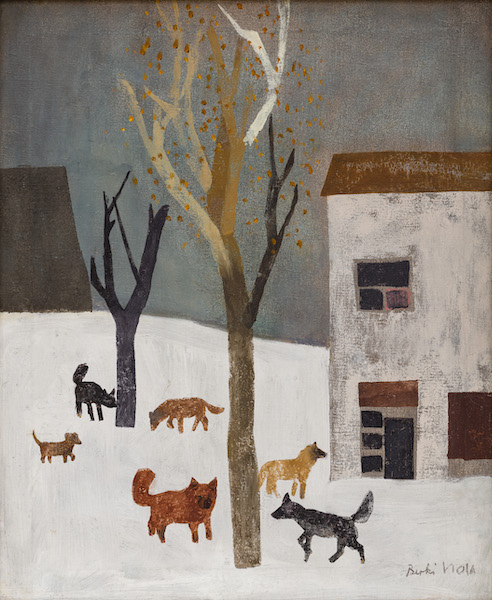Biography
Berki Viola was born into a bourgeois family from Kiskunhalas. She was a relative of János Thorma, one of the founders of the artist colony in Nagybánya. Her vivid imagination was fed by illustrations in picture books, fairy tales, legends and reading experiences. Her family's property was confiscated after 1945, and she was placed in the care of a relative in Budapest. From 1951, she was a student at the Hungarian College of Fine Arts, where she became friends with Béla Kondor and Arnold Gross. Because her father was a member of the Arrow Cross Party, she was excluded from education between 1954-55 and was only able to graduate in 1958. Her master was Géza Fónyi. She lived mainly in Budapest and worked in the studio of Dezső Korniss between 1961 and 1963. In addition to the inspirations from Szentendre, her trip to the Soviet Union in the sixties influenced her art. From 1969, she produced book illustrations, from the 1970s, etchings, and from the 1980s, screen prints.
Her style is meticulous, rich narrative "naive realism", which was built from fairy tales, legends, myths and fantasy worlds. Among Viola Berki's contemporaries, Líviusz Gyulai, Gross Arnold, Tamás Galambos or Győző Somogyi followed this style. This artistic direction was both far from the neo-avant-garde, which was reviving in the period, and from the geometric, abstract pictorial world of modernism polished to salon quality. The style, which focuses on beauty and the joys of life, left no room for political "cross-talk", rather it opened the way to the worlds of rich cultural, literary and religious traditions.
Viola Berki's works are kept by the Thorma János Museum in Kiskunhalas and the Hungarian National Gallery.

